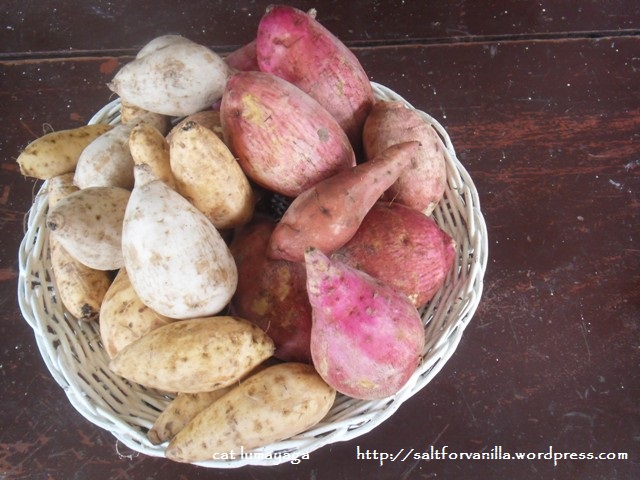When you live in a place where farming is the life that feeds most in the community. You expect to receive a few if not a lot of generous gifts from a few of those who’ve worked for you. In the past few days, a middle aged woman who sold a parcel of her farmland to us began sending “rejects” from her produce. A couple of 5-kilo really sweet (but pale) watermelon. A strawbag filled with eggplants, bittergourd, string beans and cucumber came in next. The other day she gave us a selection of sweet potatoes. I’ll determine them by their uncooked, peeled color: white, yellow and purple.
Based on my latest amazement with the color purple (or anything close to it) I decided to write a post about these free local sweet potatoes.
First, the regular kind, white fleshed. Here in the Philippines, this is the kind that you will usually find sprawled on a display stand, ground, or stalls on market days or any given day. It almost always available. Cart businesses turn them into what we call, kamote cue – like bbq only it is sweet potato. After peeling, it is often cut into either chunks or thick slices. Over high heat, the pieces are first fried to get an even browned surface then fried again (in oil with muscovado sugar) as people buy it. You’ll get it freshly made most of the time.
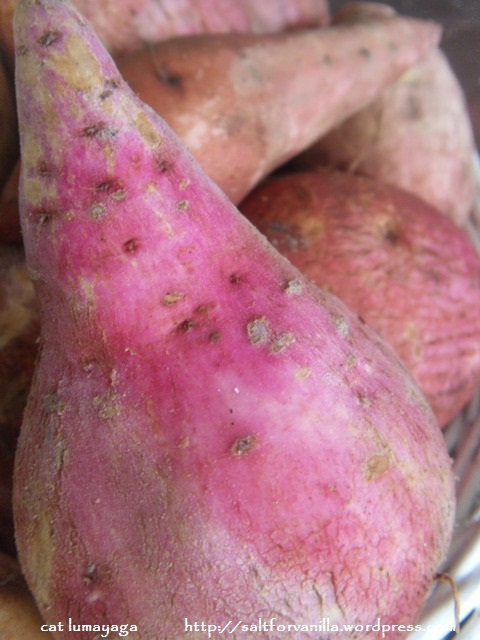
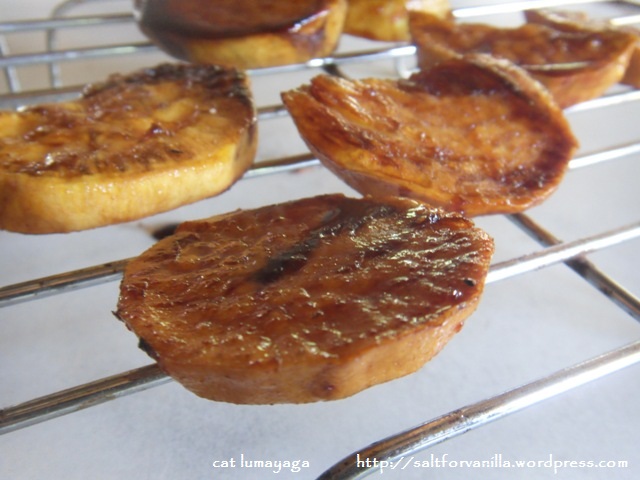
Second, the yellow fleshed sweet potato opted to be boiled. It literally made me. I know root crops are demanding aren’t they? One look and I know how they must feel. I’ll stop I sound inebriated again.
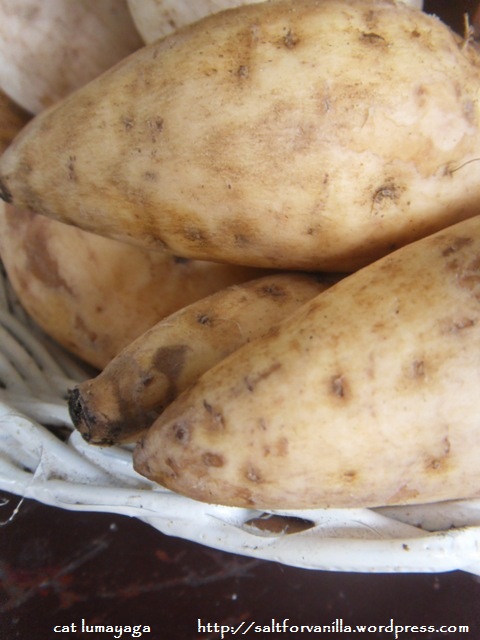
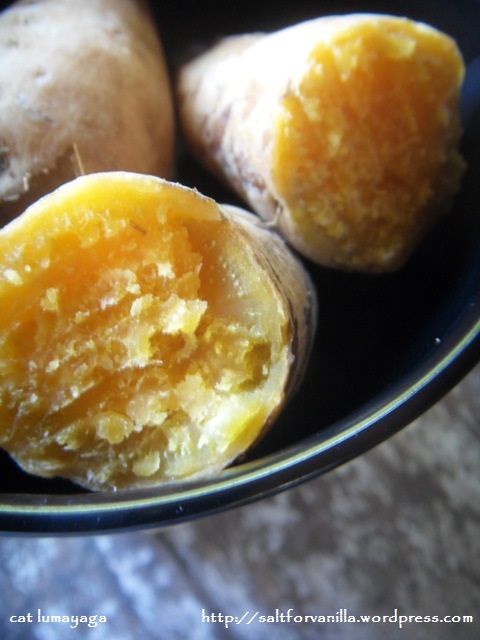
Third (and last) of course is the purple fleshed sweet potato. Holy kamote it is! I truly felt my “purple summer” groove on while I was peeling these. They are naturally sweeter than the first two varieties. So I decided to make a salted version. I’ve mentioned before that I like savory over sweets remember? Hence, salt for vanilla. After peeling them, using a gadget (created by the heavens) called peeler ( a mandolin slicer is ALSO suggested), start slicing away. Meanwhile heat about 1/2 cup of vegetable oil in a relatively small frying pan. Sprinkle a teaspoon of fine salt over an estimated 1 1/2 cup worth of thinly sliced purple sweet potato. toss it around to coat it evenly with the salt. Deep fry. The pieces will start curling up and they’re ready. Scoop ’em out of the pan. Place it on a paper toweled dish to drain excess oil. Serve immediately.
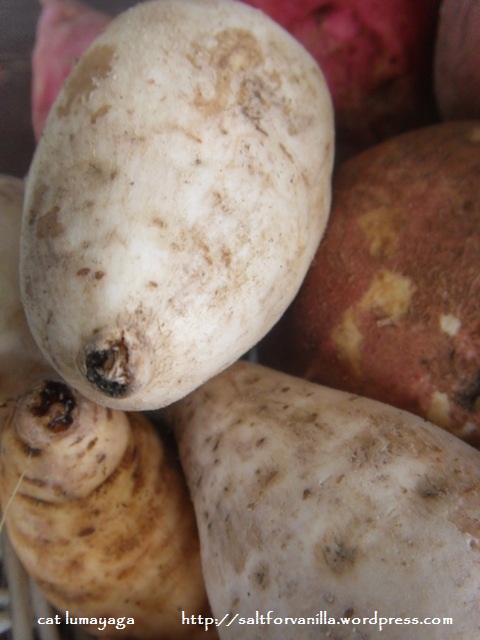
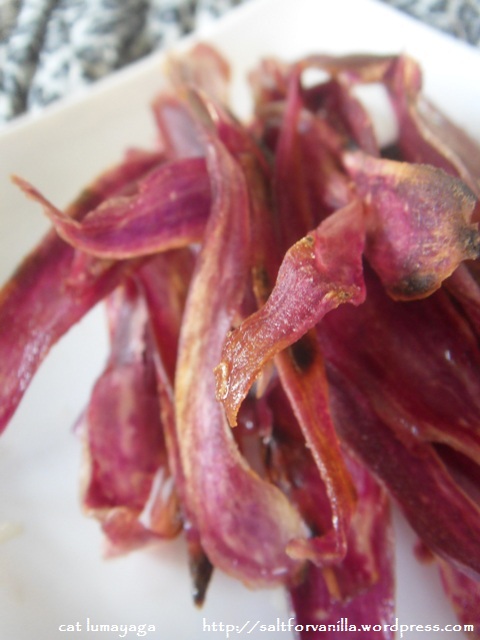
Now the pork lover in me said, “Omo, they look like bacon.”
if you’ve noticed (I’m pretty sure you haven’t) the pictures are now in jpeg format instead of the usual png. I can’t tell if this will work but we’ll see.
In this country, the sweet potato is an important root crop especially in the rural areas. It is as staple among the impoverished families since they are easier to cultivate and costs less than rice. The young leaves (shoots, kamote tops) are steamed and served with bagoong (fermented baby shrimp or fish) and piping hot rice. The kamote tops are also added in simple fish stews. the leaves themselves have no distinct taste and texture but not necessarily bad. Try it.

